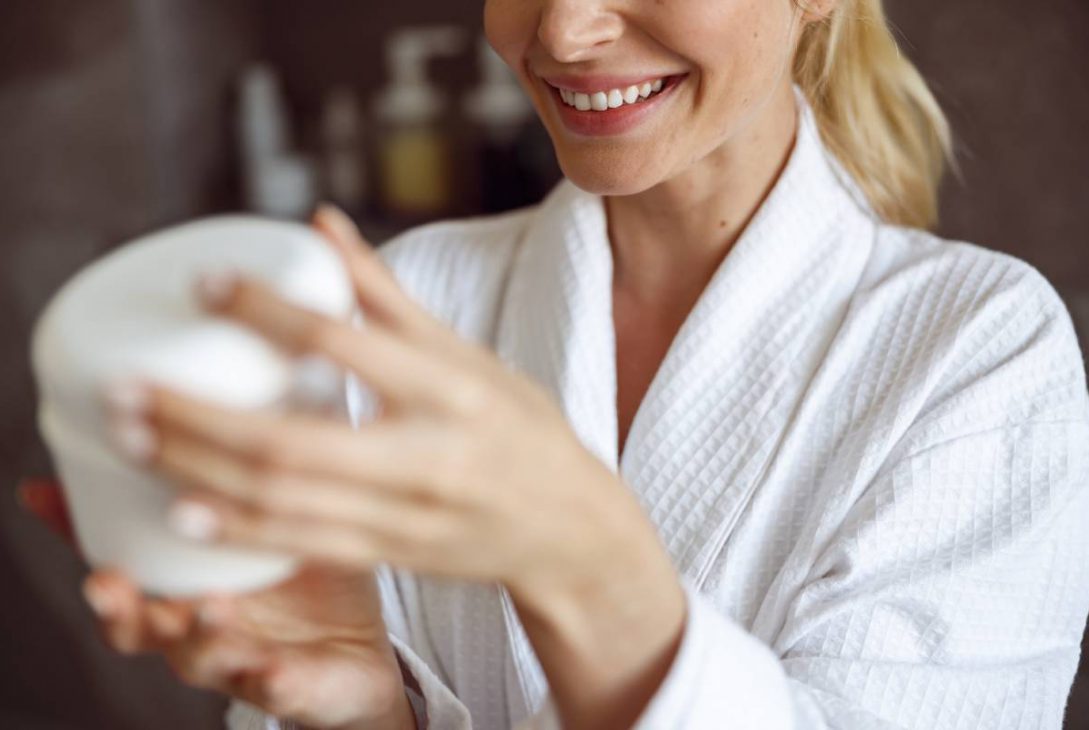As we age, our bodies go through a number of changes. Some are more obvious than others: visible signs of aging include changes to our skin, hair, and body composition. In this article, we look at the indicators of aging that most commonly occur in the skin and the ones that people are the most concerned about remedying.
There are many ways to address these signs of aging, however, picking out the best can be difficult. Depending on which signs of aging are the most troublesome for you, we have outlined some of the best anti-aging treatment creams available.
Nowadays, there are many anti-aging creams on the market that are packed full of active ingredients. To know which are best suited to combat the signs of aging we have to first understand what causes these signs.
What causes aging skin?
Aging in your skin is a result of two different kinds of wear. The first type is due to intrinsic aging, which refers to the natural rate at which the body’s cells renew themselves, while the other kind is exogenous aging, which is damaged due to external sources.
Skin loses its elasticity, firmness, and even tone as it ages, which leads to fine and coarse wrinkles. The surface of the skin might become rough and dry, the outer layer also thins, which gives it a translucent appearance and begins to reveal small underlying blood vessels. Sun exposure causes freckles, sunspots, and pigmentation changes.
How does the aging process work?
Epidermal layers
As hyaluronic acid content is lost, cell turnover slows, and reduced sebum production increases the chance of roughness and dryness on the surface. As this layer ages, it becomes more sensitive to ultra-violet (UV) rays.
Dermal layers
From the age of 25, the amount of collagen produced in the skin decreases by 1% each year. When coupled with a decline in functional elastin, fine lines and wrinkles are more likely to appear. As your skin matures, elasticity will continue to reduce, and deeper wrinkles form. Hyaluronic acid production slows down, resulting in cells being less effective at binding water, making the skin prone to dryness, damage, and broken capillaries. Reduced micro-circulation means less efficient delivery of nutrition and oxygen to the surface, leading to a decrease in radiance.
Subdermal layers
Here there is a reduction in the size and number of lipid-storing cells, resulting in sagging and a loss of volume that can lead to deeper wrinkles and a hollowing of the temples and cheeks.
UV exposure on your skin
Not surprisingly, UV exposure (called ‘photodamage’ or ‘photoaging’) is a major cause of wrinkles and fine lines. Around 90% of the changes seen in aged skin (rough, dry, deeply wrinkled, saggy skin with uneven texture and tone, depigmented white spots called ‘guttate hypomelanosis’ and broken vessels) are caused by exposure to the sun.
The UV rays cause direct damage to collagen and lead to premature aging – as well as skin cancer. Smoking also causes this damage due to nicotine altering how your body repairs itself.
What Are The best anti-aging creams?

Usually, cosmetic anti-wrinkle moisturisers, serums, and eye creams plump the skin with added moisture to reduce the appearance of wrinkles. Which is at best, a temporary fix. Consulting a dermatologist or a telemedicine prescription skincare provider, like Qr8 MediSkin, can help you maximise the benefits and efficacy of powerful active ingredients safely.
Pigmentation: Sunscreen
It’s no surprise that the least expensive anti-aging skincare product in Australia is a sunscreen that protects your skin from harmful UVA and UVB rays which play a role in premature aging and increase your chances of developing skin cancer.
A ‘broad-spectrum’ SPF of 30 and above should be part of your daily skincare routine. Even if the weather is overcast, put on your sunscreen – UVA and UVB light cuts through cloud cover, and UVB also penetrates water. There is no one sunscreen on the market that can give you total protection, which is why sunglasses, hats, and protective clothing are necessary when the sun is particularly harsh.
Anti-wrinkle: Prescription-strength retinoids

The best anti-aging products include a prescription retinoid – the only anti-aging ingredient backed by 100% of dermatologists, with scientific evidence that it works to reduce lines and wrinkles, improve sun damage, increase skin cell turnover, and restore collagen production. If pigmentated age spots are present, fading ingredients like hydroquinone can also be added to target anti-aging and hyperpigmentation in the same cream.
An overwhelming number of studies show that 0.05% of a prescription retinoid applied daily produces significant reductions in signs of photoaging like fine wrinkles, hyperpigmentation, and roughness when compared to a cream that doesn’t contain a prescription retinoid.
Firming: Thalgo Silicium Marine Lifting Correcting Day Cream
Slackening facial skin can feel like an insurmountable barrier to youthful, plumped skin but in fact, the right facial lifting technology can be greatly improved. Thalgo takes things one step further by also helping to prevent further premature aging through its introduction of a dual urban protection shield, which protects the skins from free radical aggressors, which can cause preventable environmental aging.
Plumping: Isdin Melatonik Recovery Night Serum
Melatonik™ is a restorative nighttime serum-in-oil that works while you sleep to help your skin recover from daily stresses. The 3-in-1 formula containing melatonin, bakuchiol, and vitamin C stimulates natural antioxidant defenses and helps to restore vitality and elasticity, for radiant, healthy skin. It supports collagen and elastin production, boosting the skin’s elasticity and firmness while reducing the appearance of fine lines and wrinkles.
The best anti-aging ingredients for your skin
When you are looking for anti-aging creams or treatments, think about what your main skin concerns are. Some of the most effective ingredients can irritate sensitive skin and prescribed clinically formulated treatments are the most obvious way to achieve the best results safely, under the guidance of a doctor or dermatologist.










